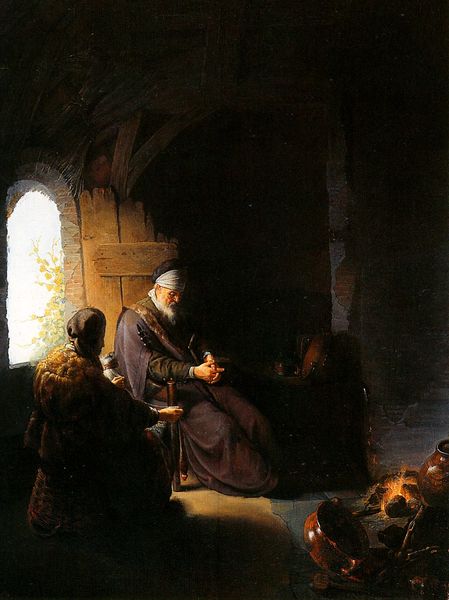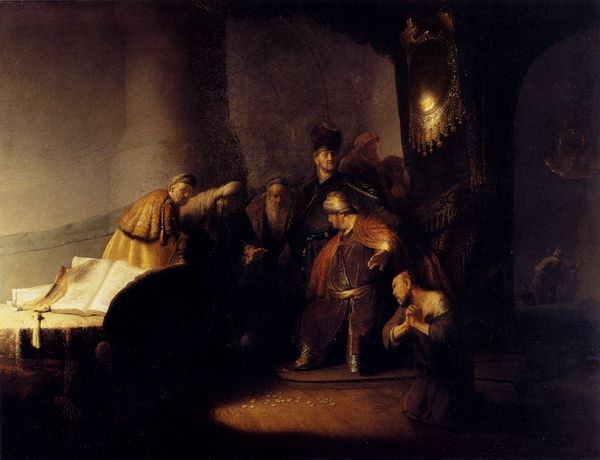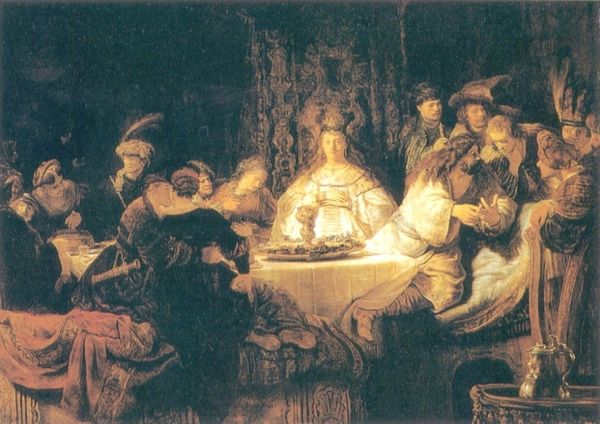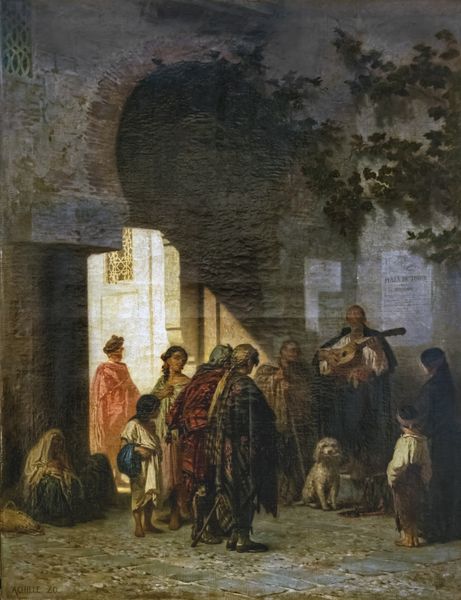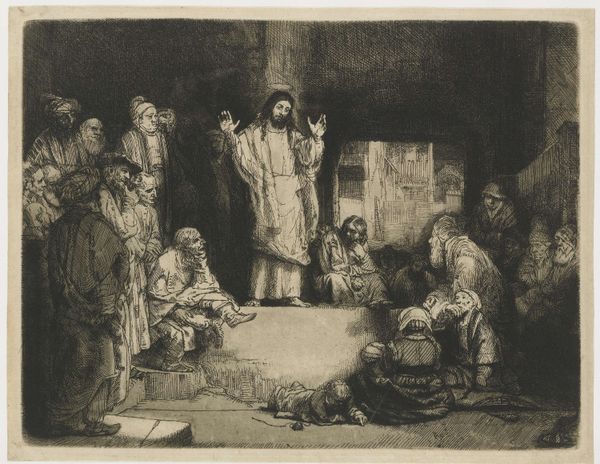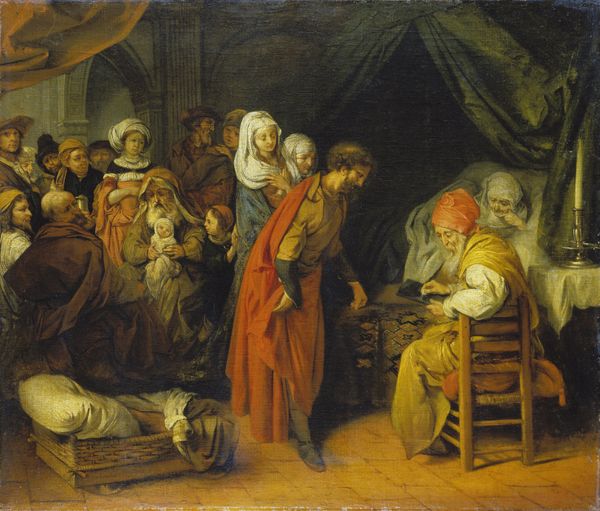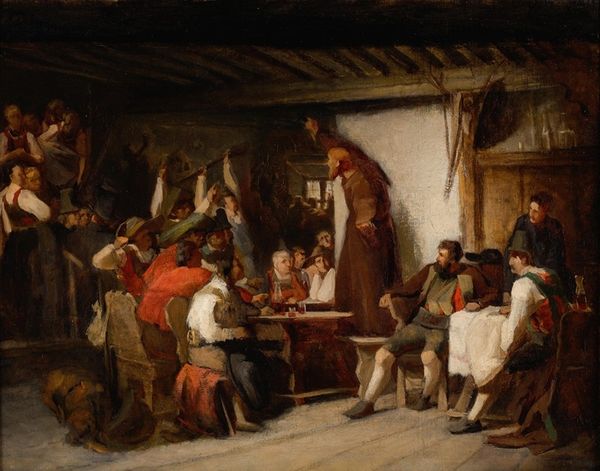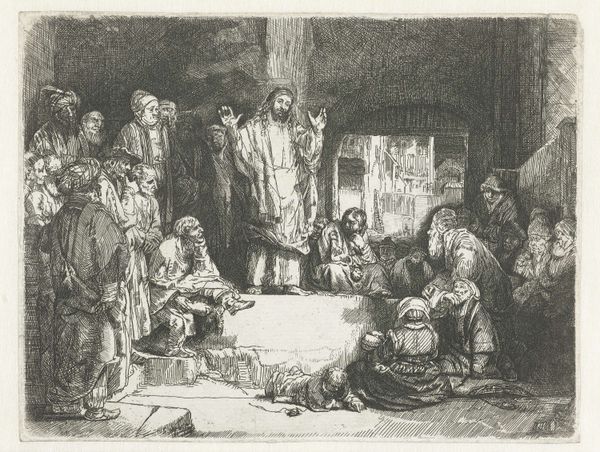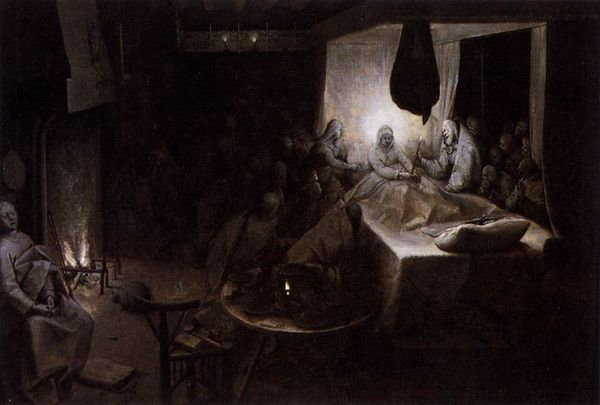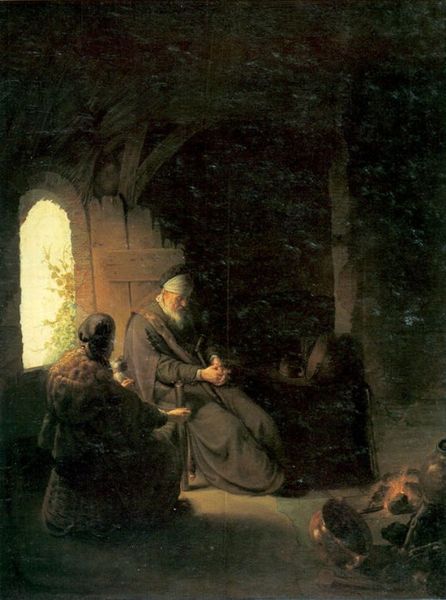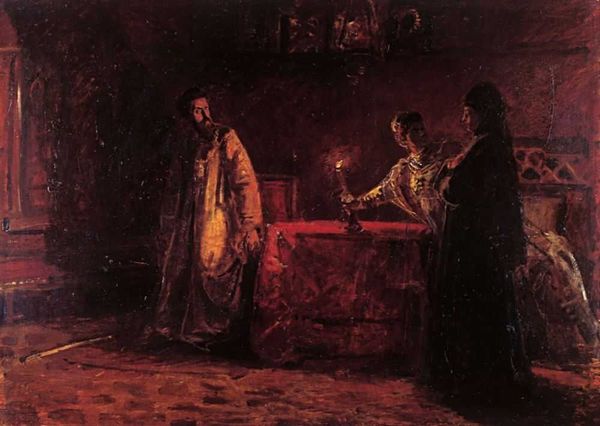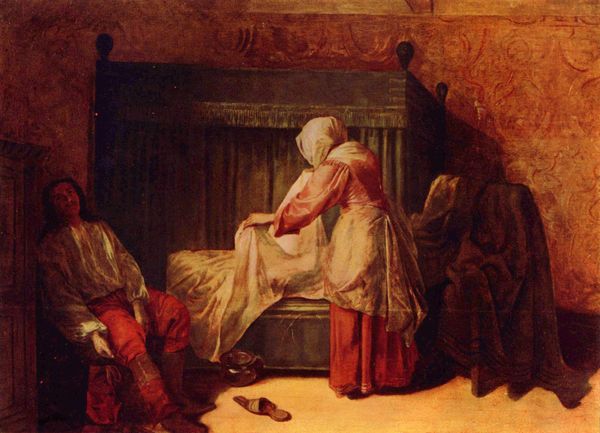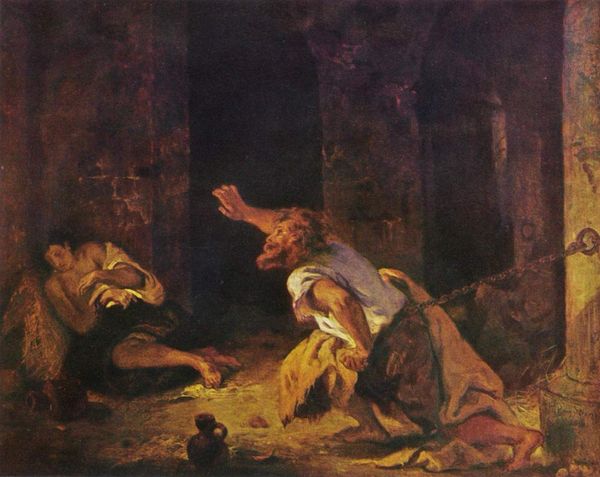
Dimensions: 283 x 382 cm
Copyright: Public domain
Curator: Walking through the halls, we encounter Nikolai Ge's "Last Supper" completed in 1863 and housed here at the Russian Museum. It’s an oil painting. What strikes you most when you look at it? Editor: The heavy, almost suffocating darkness, and that harsh light. It doesn't feel like divine light but something more clinical, like a spotlight revealing something sinister. It's not the Renaissance supper I expected, full of graceful serenity, it's all drama and dread! Curator: Absolutely. Ge’s vision was, let's say, controversial. The Imperial Academy found it far too radical, too human. Tradition dictates a serene, almost heavenly scene, but Ge dives into the tension, the betrayal lurking beneath the surface of that shared meal. Editor: You can really feel the disquiet amongst them! Jesus looks...broken. And Judas... he is almost swallowed by shadow. Is it just me, or is that almost allegorical? A commentary on the role of the betrayer throughout history, destined to a shadowy existence? Curator: Precisely, and that’s what riled many viewers back then. Ge was aiming to strip away the religious dogma, the gilded veneer, and show the raw, human emotions at play during a moment of profound spiritual crisis and betrayal. He’s delving into the socio-political ramifications of that betrayal as much as he's interested in the narrative itself. Remember, this was a period of social upheaval in Russia as well. Editor: It’s the darkness that really carries the message. It allows for the drama, almost creating individual pockets of fear around each figure. Even the stark geometry of that small table almost reads as isolating, underlining each character's individual fate. Curator: Indeed, Ge wanted to provoke discussion, challenge comfortable perceptions, and he did it in a visual language that’s very much of its time. Its impact extends beyond simple narrative and speaks of Russia’s turbulent shift toward reform during the late 19th Century. Editor: Looking again, I appreciate how Ge rejected conventional iconography for emotional authenticity. "The Last Supper" freed from pious sentiment feels much closer to human experience. Curator: Well, stepping away, it's fair to say Ge created a work which stays with you, and continues to stir up feelings. Editor: That dark light just hangs in the air, doesn't it? An unsettling portrayal that transcends mere illustration.
Comments
No comments
Be the first to comment and join the conversation on the ultimate creative platform.
